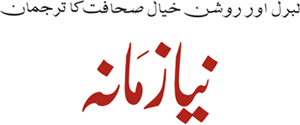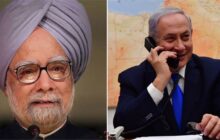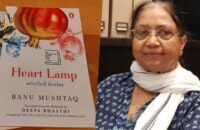The September 18 terrorist attack in Uri, which killed 19 Indian soldiers in peacetime, is not the first incident abetted and denied by Pakistan, perhaps nor the last. Exactly eight years ago in November 2008, when Mumbai was attacked by a squad of well-trained terrorists that killed nearly 200 people and wounded several more, Pakistan vehemently denied only to concede later — under international pressure— that the attack was planned on its soil and that the perpetrators were its own nationals. In Uri’s case, although Pakistan’s civilian government has strongly rejected India’s allegations that the attack emanated from Pakistan, the fact is that the civilian government does not control Kashmir policy, nor is able to convince its military leadership to renounce jihad as a tool of statecraft. Accordingly, there’s good reason to doubt that the Pakistani government’s endorsement (or lack thereof) is a reliable indicator.
For the past 70 years, Islamabad and New Delhi have been divided over who should fully control Kashmir. Beyond the bilateral dimension, Kashmir pits Pakistan’s civil and military leaderships against each other, with each side scrambling to figure out whether the country should resolve the dispute politically or militarily. If the past is of any use as a reference, the Uri attack, which India claims is linked to Pakistan, should be interpreted as yet another desperate attempt by the military leadership to stress that the diplomatic solution Prime Minister Nawaz Sharif proposed at the United Nations is better served if accompanied by the use of proxies under the cover of Pakistan’s nuclear arms.
The Uri attack—in all likelihood without the knowledge of civilian leadership—inflicted painful losses to India’s army and the nation; however, it also inevitably doomed Sharif’s the otherwise successful diplomatic offensive to raise the Kashmir dispute at international fora and convince world leaders to put their weight behind an early resolution on Pakistan’s terms. Pakistan’s military leaders believe that the use of proxies will move the Kashmir dispute “from the backburner to the forefront.” In reality, the attack has instead reinforced the global perception that Pakistan is a state sponsor of terrorism—an appellation that Islamabad has long sought to avoid to keep much-need international support on its side.
Not only that, the Uri attack is a chilling reminder as to who really runs the government in Islamabad: the elected civilians or unelected institutions (i.e., the military). As I previously explained in The Diplomat, although Sharif’s government survived the ominous 2014 Long March, it lost control over key strategic areas, including Kashmir, to the military. Kashmir policy has rarely been the prerogative of Pakistan’s civilians. Yet, whenever it has been, political leaders (including generals who have made the move to politics) have tried to seek a negotiated rather than a military solution to the dispute. The 1947-48 war over Kashmir that briefly followed Pakistan’s and India’s independence not only set the South Asian neighbors on a perennial collision course; it also revealed for the first time a deep-rooted schism in Pakistan’s civil and military leadership, with the former more prone to political settlement than the latter. As Aqil Shah notes in The Army and Democracy: Military Politics in Pakistan, the willingness of civilian leaders to accept a ceasefire in the 1947-48 Kashmir war was one of the major factors that angered the military leadership and paved the way for the first military coup—a precursor to all coups, soft and hard, in Pakistan.
Relatively obscure, the coup popularly dubbed as the “Rawalpindi Conspiracy” was a failed attempt by Maj. General Akbar Khan and his abettors who, to quote Shah, “saw the civilian leadership’s ultimate decision to accept a cease-fire [in Kashmir] as a national surrender that deprived the army of a potential victory.” Although the coup peaked in 1951, “Akbar and his… army collaborators had begun to conspire to overthrow the elected government in July 1949, barely six months after the ceasefire in Kashmir,” Shah observes. A timely tip-off foiled the coup. Yet the military’s institutional perception of civilians’ incompetence and pusillanimity never ceased to cast a long shadow over the question how the dispute over Kashmir should be resolved: by diplomacy or force.
Following a protracted period of military rule from 1958 to 1971, when Zulfiqar Ali Bhutto assumed power in 1971, the very first initiative he took— despite being known for his advocacy for the botched 1965 Operation Gibraltar in the cabinet of General Ayub and his hawkish political campaign in the late 1960s—was the signing of Simla Agreement with India. Concluded in July 1972, the Agreement saw both states recognize that they will “settle their differences by peaceful means through bilateral negotiations” and that the ceasefire line that theretofore divided Pakistan’s and India’s side of Kashmir would be the “line of control” (LOC). Technically, when the parliaments of both Pakistan and India endorsed the Agreement and accepted the LOC as a status quo line, the Kashmir dispute should have stood resolved and uncontestable. But, for better or worse, that did not happen. Bhutto’s government was rounded off relatively quickly in a coup and the military government that followed under General Zia-ul-Haq had little patience for the civilians’ commitments. Facing a legitimacy crisis and mass protests by political parties, Zia is speculated to have adopted rather a hostile Kashmir policy along with developing nuclear weapons to secure his rickety political rule until his plane crashed in 1988.
The Benazir Bhutto civilian government that followed Zia’s was not independent enough to steer an autonomous policy on Kashmir. Reportedly, when Ms. Bhutto assumed office after Zia’s death, the military refused to transfer her power until she agreed, among other things, to cede control over Kashmir policy. Although Feroz Khan in Eating Grass: The Making of the Pakistani Bomb justifies the five-point deal struck with Ms. Bhutto as one executed on President Ghulam Ishaq Khan’s (GIK) behalf, Husain Haqqani, in Pakistan: Between Mosque and Military, doubts if the president acted independently. For instance, when Ms. Bhutto’s government was sacked in 1990 by President GIK, he in his interview with Haqqani admitted that “the demand for dismissal had come from the military.”
Nonetheless, despite being constrained by the so-called deal, Ms. Bhutto still went ahead to normalize relations with India, including the resolution of Kashmir dispute. In 1989, she met India’s Prime Minister Rajiv Gandhi in Islamabad to sign a joint communique that allowed both states to resolve all outstanding disputes, including Kashmir’s, amicably. However, as Ms. Bhutto was busy establishing friendly relations with India, her generals were conducting large-scale military exercises to undermine her efforts. According to then director general of ISI, General Hameed Gul, the motivation behind the Zarb-e-Momin exercise in 1989 was to “block the prime minister’s design to undermine our [Pakistan’s] defense.”
The pattern repeated again, following the 1998 nuclear tests, when Sharif invited his Indian counterpart, Prime Minister Atal Bihari Vajpayee, to Pakistan and both leaders signed the historic Lahore Declaration in February 1999— agreeing to peacefully resolve the Kashmir crisis among other disputes. Sharif’s own chief of army staff, General Pervez Musharraf, launched a military offensive in Kargil, which Sharif later admitted was a “stab in [Vajpayee’s] back”. The infamous Operation Kargil, which sabotaged the peace process between Islamabad and New Delhi, paved the way for yet another period of martial law in Pakistan that lasted nearly a decade with no prospects for South Asian peace.
However, viewing Operation Kargil as an improvised invention of a cavalier general bent on derailing the peace process risks missing the forest for the trees. As T.V. Paul and Shuja Nawaz note, the Kargil operation had been on Musharraf’s radar since as far back as 1996. When Benazir Bhutto visited GHQ to address the army officers, Musharraf — then director general of military operations (DGMO) — sought Ms. Bhutto’s sanction to launch the Kargil offensive. In the most calculated and persuasive manner, Musharraf explained to Bhutto that “time window for the resolution of the Kashmir dispute is short…the [economic and military] differential [between India and Pakistan] is increasing and the window will close [soon].” Although Bhutto flatly declined to act, Musharraf still went ahead to execute his plan shortly after becoming COAS in 1998. The operation failed badly in Kargil, but it succeeded in Islamabad. When, after Operation Kargil, Sharif considered court martialing the general, Musharraf imposed martial law and became the chief executive of the country.
Yet when Musharraf transitioned to his political career as the president of Pakistan—although he still simultaneously held the COAS portfolio— in hindsight, he is seen as having abandoned his militaristic approach in favor of a political solution of the Kashmir dispute. The empirical evidence suggests that, during his nearly decade-long undivided control over foreign and defense polices, Musharraf rarely went down the road of a Kargil-like offensive in Kashmir. Instead, not only did he become convinced that the only solution for Kashmir was political, but he also authorized his foreign minister, Khursheed Kasuri, to lead the “composite dialogue” on Kashmir.
According to reports, Musharraf agreed to give up claims on Jammu and Kashmir and the plebiscite option under the United Nations if India accepted his four-point formula—no different than the one incorporated in the 1972 Simla Agreement. The four-point formula included i) gradual withdrawal of troops, ii) self-governance, iii) acknowledgement of the line of control as an international border, and iv) a joint supervision mechanism by India, Pakistan, and the representatives of Kashmiris across the line of control. The formula was working, and according to reports, both states had made substantial progress toward the dispute resolution when Musharraf’s government, amid mass protests, fell at home
Kashmir is as much if not more, a dispute between Pakistan’s civil-military leadership as it is between Islamabad and New Delhi. Unless Pakistan’s civil-military leadership gets on the same page and agrees to mend fences with India and seek a political solution, avoiding a catastrophic conflict including a nuclear war in South Asia will remain a constant struggle.
Ahsan Yousaf Chaudhary focuses on Pakistan’s civil-military relations vis-à-vis India, the U.S., and Pakistan’s nuclear development and policy. He studied International relations at University of Bristol, U.K. where he was a commonwealth scholar for the year 2014-15. Tweets are at @ahsanych




























One Comment